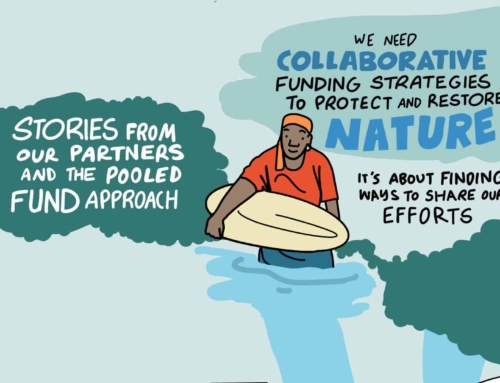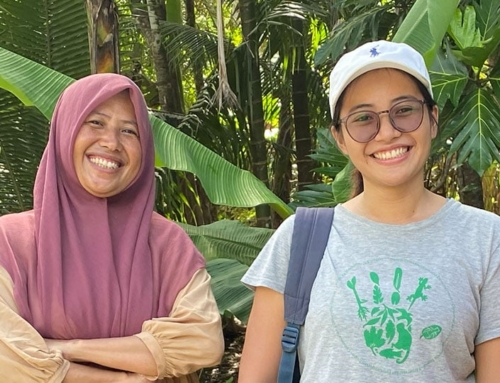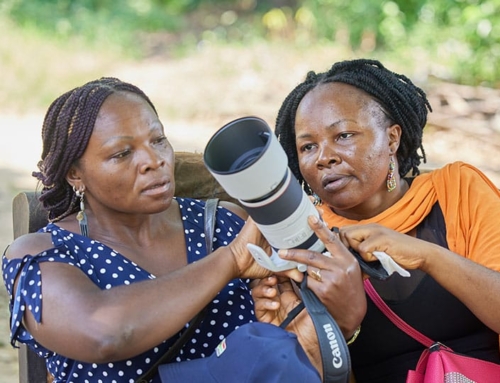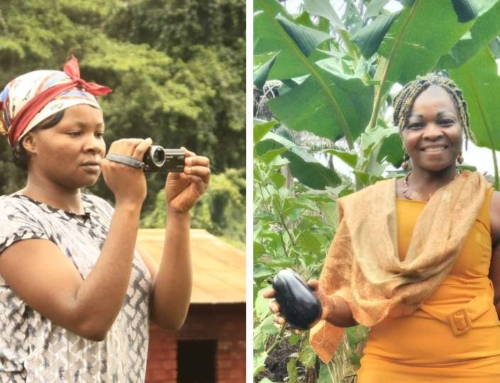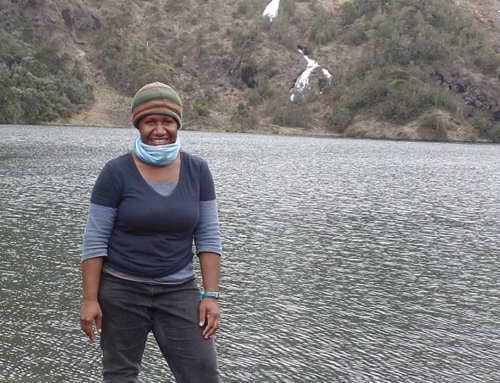
In March 2022, Reefah Chowdhury began working with us as part of the Race for Nature’s Recovery (R4NR) programme. She joined Synchronicity Earth with a background in law to hone her communication abilities and gain knowledge of the environment sector. In this blog, she describes her experience being part of the RNR programme, and her role as a communication assistant.
Memories of nature
When you live in London, it can be hard to envision nature in all its splendour. You only ever think about it when you’re complaining about the lack of open spaces and the never-ending pollution from which you cannot escape.
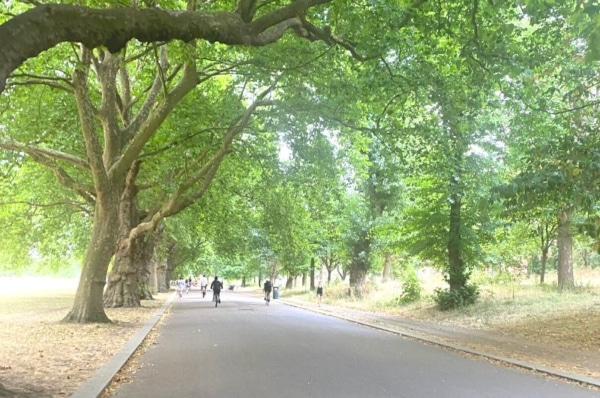
Victoria Park, London. Image Ⓒ Reefah Chowdhury
My earliest memory of nature and London’s natural environment was at my local ecology centre in East London, when I was 7 years old. My school and the ecology centre collaborated to teach students about the urban ecosystem and to raise tadpoles and tend frogs in a project called “Bringing the countryside to the East End.”
They had all sorts of bugs and amphibians and, during a demonstration with an ecologist, a small frog the size of a ping pong ball was placed in my hand. The frog’s sliminess made me squirm, but I overcame this, fascinated by its googly eyes.
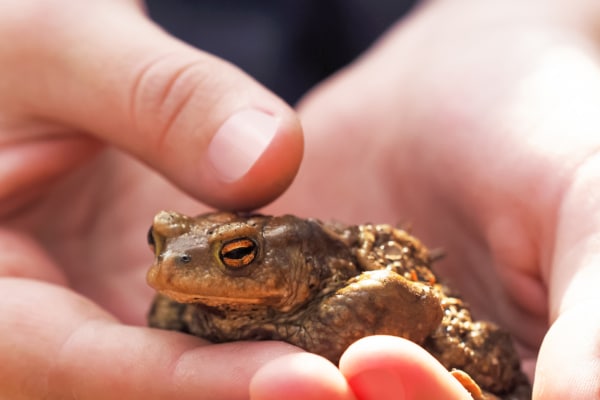
Child holding a brown moor frog in their hands. Image Ⓒ iStock. ANGHI
This memory continued to live on, but my connection with nature drifted as I grew older and moved forward with my law degree. I took a few summers out to camp with friends and family, but I never saw the environment sector as a career choice.
But then, earlier this year I read an advertisement for a communication assistant at a conservation charity. This position was part of Race for Nature’s Recovery (R4NR), a programme designed to use the Government’s Kickstart scheme to support over 100 young people from underrepresented backgrounds in the sector to gain entry-level positions. I was excited about the possibility of this new career path but also concerned about my lack of knowledge and experience with nature.
However, I came to realise that, particularly for a communications role, my background would be essential in understanding how to reach out to those who were also like me: those who are curious about nature but haven’t had much opportunity to learn about the natural world and the environment sector.
The transition
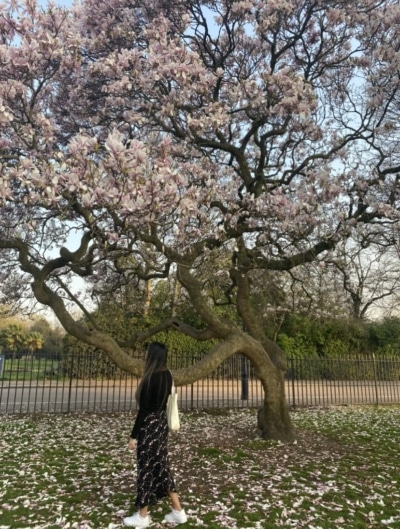
Reefah in Victoria Park, London. Image © Reefah Chowdhury
Transitioning from law to communications was a big jump. I went from writing formal legal essays about breaches of duty and the wrongs of omission to drafting attention-grabbing tweets about amphibians. Working as a communication assistant is all about drafting social media posts, editing blogs, and working on the Synchronicity Earth website.
Everything about this role seemed easy on paper but it was challenging as I had to change the way I write, think, and even interact with people online. But there have been some incredible highlights, such as helping with the Champions of the Endangered campaign and interviewing Nemonte Nenquimo, a Waorani Indigenous activist from Ecuador, with my colleague Jim Pettiward.
The R4NR programme offered support which helped me shift from the legal field to communications through mentoring and training alongside other people in the programme. This increased my knowledge of the environmental sector and supported me in showcasing my transferrable skills, which I can use in both my present and future roles.
Race for Nature’s Recovery
In April, the R4NR programme held a three-day workshop run by Action for Conservation and Voyage Youth. In the first session, I met numerous people who, like me, had no prior experience in conservation before starting their current roles, reassuring me that I wasn’t the only one!
Throughout the week, we discovered more about the environmental sector, including the diversity and recruitment issues it faces. For example, many young people like me have little awareness of this sector and the jobs available because of limited environmental knowledge. In addition, the need for unpaid experience is often a requirement for entry-level paid positions, which widens the gap and contributes to a lack of diversity in conservation.

Reefah working at the office. Image Ⓒ Nina Seale
The training that R4NR provided was important to help build my familiarity and confidence in the environmental sector. During the workshop, I was particularly fascinated by the definition of nature and how it varies across different cultures. For example, in Japan, ‘Sato-Yama’, refers to a landscape where a relationship exists between nature and people, whereas in modern western culture, nature is usually understood as something pristine and untouched by humankind.
It was pivotal for me to understand the many benefits of nature, not just tangible ones such as clean air and water, but also regulating, spiritual, and cultural benefits. This allowed me to view nature in a new light and recognise that it is valuable not only for what it provides but also for what it means to different individuals.
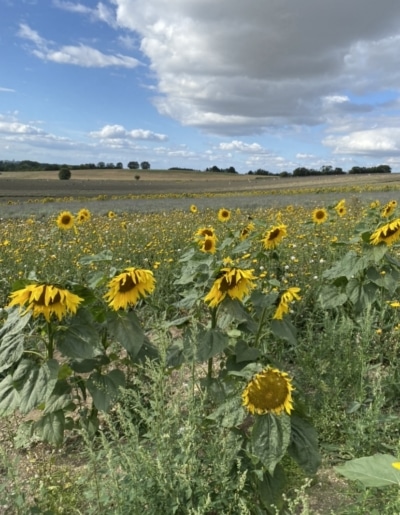
Sunflowers in Cadwell farm, Hitchin. Image © Reefah Chowdhury
The workshop made me think about our educational institutions, and how the government and communities need to do more to teach young people about the environment. If I hadn’t been on this placement, I would still have a limited understanding of conservation and the environmental sector. Clearly, the more we learn, the more easily we will be able to close the sector’s current gaps. To quote Nemonte:
“I think that if you want to feel more connected, wherever you are, you have to start with education.”
–Nemonte Nenquimo
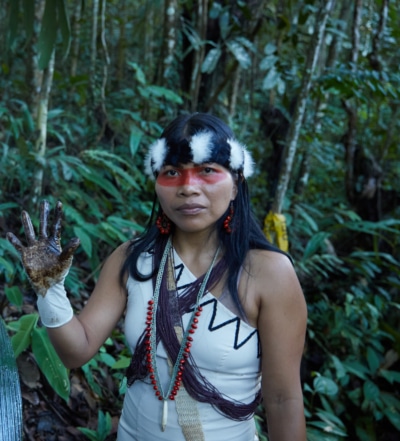
Nemonte Nenquimo, Waorani Indigenous leader. Image © Amazon Frontlines
This, in my opinion, is important for not only myself but today’s generation. We can’t advocate for conservation or climate action if we have no idea what it means or what this involves. Education starts at home, in schools and in our community. If it wasn’t for Synchronicity Earth, I would have limited knowledge about the conservation challenges people around the world face. Young people need the opportunity and space to learn.
Looking ahead
As my placement draws to a close, I can truly say that I met and worked with incredible individuals at Synchronicity Earth whose efforts in conservation and sustainable development have inspired me greatly.
Through drafting and editing content in line with the organisation’s Communications and Engagement Strategy, I have gained valuable skills in written communications that I will take with me to my new communication role in the Civil Service, which will be policy-focused and a stepping stone to a career in environmental policy.
And as a recently converted conservationist, I can attest that I won’t just remain silent; I’ll bring these abilities and my newly acquired enthusiasm for conservation into my new position.
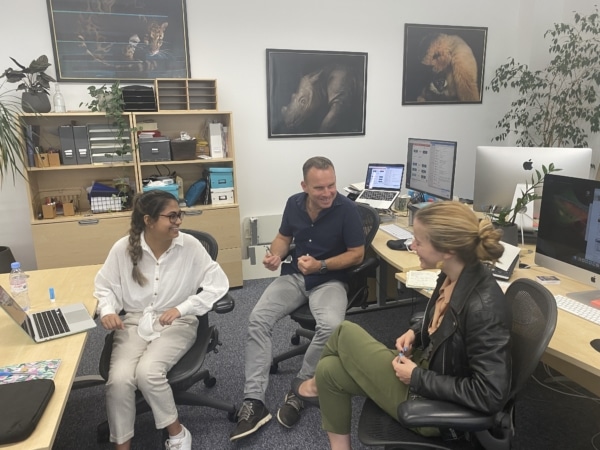
Synchronicity Earth’s communication team in action, Reefah Chowdhury (left), Jim Pettiward (middle), and Nina Seale (right). Image © Synchronicity Earth
Taking on this role at Synchronicity Earth gave me a chance to find myself, but it also gave me the opportunity to decide what direction I want my career to take, and I am grateful for this experience.
Thank you, Synchronicity Earth!

